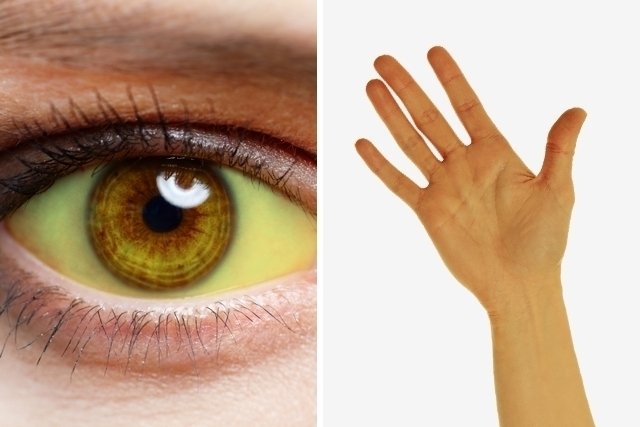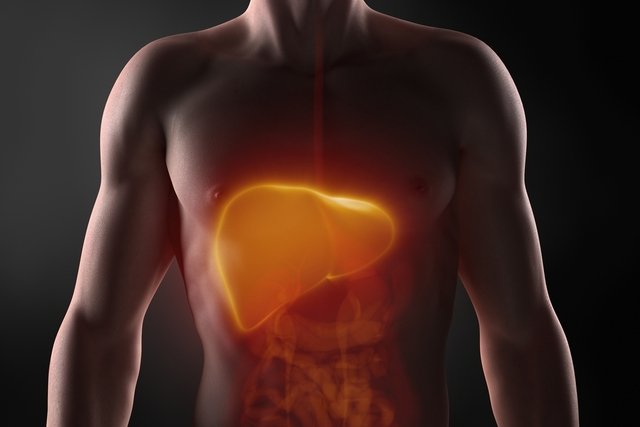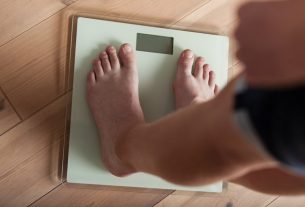Yellow skin is one of the main symptoms of liver diseases, such as cirrhosis, liver failure or hepatitis, especially when there is also yellowing of the whites of the eyes.
However, yellow skin can also be a sign of other diseases such as anemia or anorexia nervosa. Furthermore, high intake of foods rich in beta-carotene such as carrots or papaya can also make the skin yellow. However, in these cases, the eyes do not turn yellow, only the skin.
It is important to go to the doctor as soon as yellowish skin is noticed, especially if there is also a fever, whitish stools, dark urine, weakness and excessive tiredness, to identify the cause and start the most appropriate treatment.

The main causes of yellow skin include:
1. Hepatitis
Hepatitis is the most common cause of jaundice and corresponds to inflammation of the liver caused by a virus, continued use of medications or an autoimmune disease, leading to symptoms such as yellowish skin, abdominal pain and swelling, slight fever, itching, nausea, vomiting and loss of appetite. See what the symptoms of hepatitis are.
What to do: The treatment of hepatitis must be carried out in accordance with medical recommendations, and the use of medication or rest, adequate nutrition and hydration may be recommended depending on the cause of the hepatitis.
Don’t ignore your symptoms!
Liver failure occurs when the liver is not able to perform its normal functions, such as detoxifying the body, for example. In this case, in addition to jaundice, the person usually presents swelling of the body, body pain, bleeding and ascites, which is the accumulation of fluids in the abdomen.
What to do: It is important to consult a hepatologist to discover the cause of the disease and establish the best form of treatment, which is often done through liver transplantation.
3. Liver cyst
The cyst is a cavity filled with fluid and in the liver does not normally produce symptoms, however, in some cases, it can lead to a yellowish appearance of the skin, in addition to the abdomen, sudden weight loss, fever above 38ºC and tiredness.
What to do: The liver cyst does not normally require specific treatment, but if it gradually increases in size and causes symptoms, surgical removal may be necessary. Find out more about liver cysts.
4. Liver cirrhosis
Liver cirrhosis corresponds to chronic and progressive inflammation of the liver characterized by the destruction of liver cells, which can cause yellowish skin and yellow eyes, whitish nails, bad breath, prominent and visible veins in the abdomen and abdominal swelling. Check out other symptoms of liver cirrhosis.
What to do: The treatment for liver cirrhosis varies according to the cause, however it is important to maintain a diet rich in fruits, vegetables, lean meats and whole grains, as they are easily digestible. Understand how cirrhosis is treated.
5. Gallstones
Gallstones are formed due to the accumulation of calcium and cholesterol inside the gallbladder and can cause a gallbladder infection, called cholangitis, which causes jaundice, fever above 38ºC, severe pain in the abdomen, back pain, nausea, vomiting and loss of appetite.
What to do: Treatment can be done with the use of medicine, surgery and an adequate diet, rich in fruits, vegetables, salads and whole grain products.
6. Sickle cell anemia
Sickle cell anemia is a type of hereditary anemia in which red blood cells are malformed, changing their shape, causing a deficiency in the transport of oxygen to the body’s cells, which can cause jaundice, swelling and redness of the hands and feet, as well as pain in the bones and joints. Learn more about sickle cell anemia.
What to do: The treatment of sickle cell anemia is carried out according to the guidance of the hematologist and normally involves the use of medication and blood transfusions for life.
7. Thalassemia
Thalassemia is a genetic and hereditary blood disease that causes, in addition to yellow skin and eyes, symptoms such as tiredness, anemia, weakness and growth retardation.
What to do: thalassemia has no cure, however treatment is carried out according to the severity of the symptoms, with blood transfusions and the use of folic acid supplements. See how thalassemia is treated.
8. Anorexia nervosa
Anorexia nervosa is characterized by exaggerated and sudden weight loss with distortion of body image, and anorectic individuals are common to have dry, yellow skin, as well as hair loss or thin, brittle hair.
What to do: Treatment involves group, family and behavioral therapy, in addition to nutritional monitoring, usually with the intake of dietary supplements to eliminate nutritional deficiencies.
9. Excessive beta-carotene intake
Beta-carotene is an antioxidant present in many foods, being mainly responsible for improving the immune system, in addition to helping to improve tanning. Thus, excessive consumption of foods rich in beta-carotene, such as carrots, papaya, pumpkin, tomatoes and broccoli, for example, can lead to a yellowish appearance of the skin. See which foods are rich in beta-carotene.
What to do: The best way to get your skin back to its normal color is by reducing your consumption of these foods and looking for other foods that have the same properties.
10. Neonatal jaundice
Neonatal jaundice corresponds to the presence of yellowish skin in babies in the first days of life and occurs due to the accumulation of bilirubin in the bloodstream, which must be treated in the hospital and, in more serious cases, preferably in the neonatal ICU.
What to do: The treatment of jaundice in babies is carried out in the hospital using phototherapy, which consists of exposing the baby to light for a few days with the aim of reducing the blood concentration of bilirubin. Understand what newborn jaundice is and how it is treated.
11. Malaria
Malaria is a disease caused by the parasite Plasmodium which can be transmitted through the bite of a female mosquito Anopheles infected.
Generally, the symptoms of malaria are high fever, headache or muscle pain or general malaise. However, in the most serious cases, it can cause jaundice, leaving the skin yellow all over the body, as well as mental confusion or even convulsions.
What to do: Malaria treatment must be started as soon as possible, as it can progress seriously, and is generally done with antimalarial medicines prescribed by the general practitioner or infectious disease specialist, such as chloroquine or primaquine, for example. See all malaria medicine options.
12. Liver or gallbladder cancer
Liver or gallbladder cancer can cause yellow skin all over the body and yellow eyes, as well as other symptoms such as frequent nausea and vomiting, pain in the right side of the abdomen or bloating in the belly. Know how to identify the symptoms of liver cancer and gallbladder cancer.
What to do: You should consult your general practitioner or hepatologist so that tests can be carried out and the type of cancer and stage diagnosed. The treatment of these types of cancer is carried out by an oncologist, and surgery, chemotherapy or radiotherapy may be indicated, for example.
13. Pancreatic cancer
Pancreatic cancer may not present symptoms in the early stages, but as the cancer progresses, it can cause symptoms such as yellowing of the skin and eyes, itching all over the body, dark urine, pale stools or loss of appetite, for example. See other symptoms of pancreatic cancer.
What to do: The treatment of pancreatic cancer is carried out by an oncologist and involves surgery to remove the affected part of the pancreas or the entire pancreas, and chemotherapy, targeted therapy and/or radiotherapy may also be indicated.

Sign up for our newsletter and stay up to date with exclusive news
that can transform your routine!
Warning: Undefined array key "title" in /home/storelat/public_html/wp-content/plugins/link-whisper-premium/templates/frontend/related-posts.php on line 12
Warning: Undefined array key "title_tag" in /home/storelat/public_html/wp-content/plugins/link-whisper-premium/templates/frontend/related-posts.php on line 13




